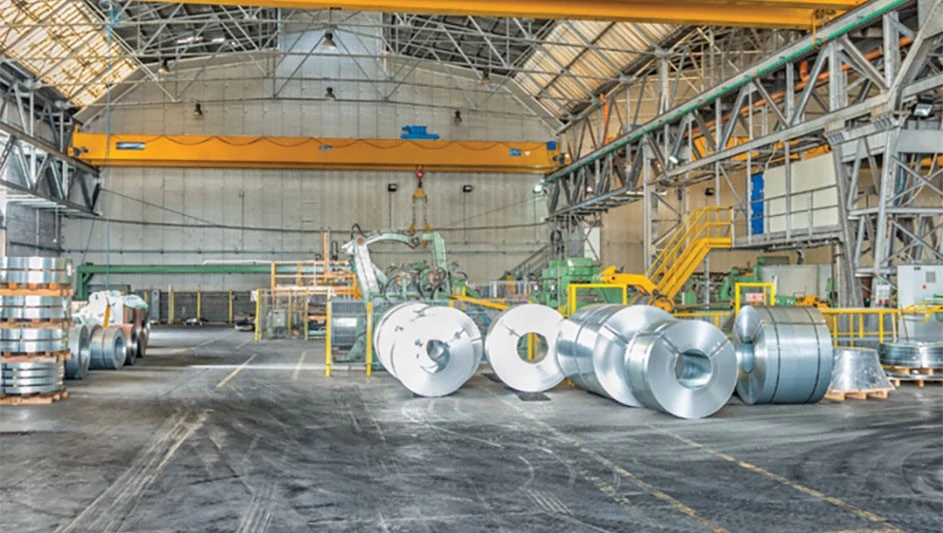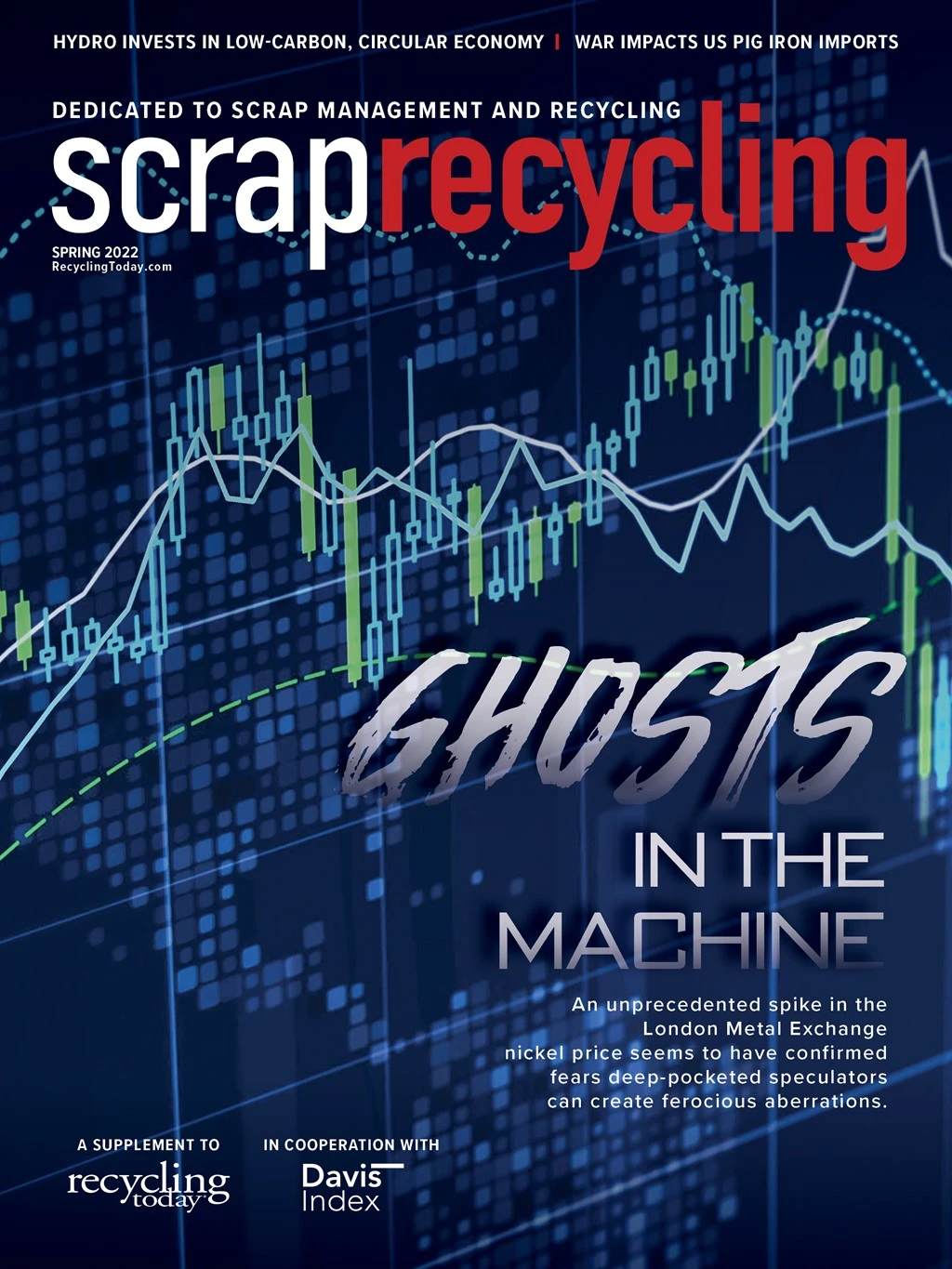

When steelmaking and iron mining firm Cleveland-Cliffs purchased a scrap processing company in late 2021, its CEO was direct in saying access to prime grades of ferrous scrap was an underlying reason for the $775 million acquisition.
When announcing his company’s intention to buy Detroit- based Ferrous Processing & Trading (FPT), Cleveland-Cliffs CEO Lourenco Goncalves said, “FPT has a very meaningful presence in prime scrap. With all the new flat-rolled EAF (electric arc furnace) capacity coming online in our market over the next four years, prime scrap will only become more and more scarce.”
After the deal was finalized, Goncalves again referred to the scarcity of prime ferrous scrap: “With our closing of the FPT acquisition today, we are now immediately focused on amplifying the value of what we believe is the next precious metal.”
Prime scrap, with its predictable and desirable chemistry, historically has traded at a premium to obsolete grades of scrap, with the price spread between the two at times reaching more than $100 per ton.

Always wanted
Prime scrap having a higher value than the shredded or heavy melting steel (HMS) grades is nothing new. Sheet steel used at automotive stamping plants, in particular, has a low percentage of “tramp elements,” or nonferrous metals alloyed in small amounts in nearly all steel.
While the copper or molybdenum tramp elements might be found in tiny percentages in most steel, a melt shop manager keeps a close eye on them lest they cause a batch of steel to be too brittle or have another unwelcome property.
Scrap traders indicate prime grades year-in and year-out typically have had greater value and they don’t need to be shipped very far to find a home.
“We generally stay in the Midwest with primes: the Ohio valley, Chicago, Cleveland, Pittsburgh and Indiana—mills within 300 miles,” a processor in that region says.
He says such scrap can travel by rail or barge outside the region, but a need to do so in the inland parts of the United States seldom arises. “We just happen to be within 300 miles of major consumers,” he says.
What about for recyclers closer to an East, West of Gulf coast port? Statistics gathered by the U.S. Department of Commerce and summarized by the U.S. Geological Survey (USGS) show No. 1 bundles (a commonly tracked and traded prime grade) being exported at just a fraction of shredded or HMS grades.
In 2021, the agencies say 335,000 metric tons of No. 1 bundles were exported from the United States. That represents just 2 percent of the 16.7 million metric tons of carbon steel scrap USGS says were shipped overseas last year.
Some 5.45 million metric tons of shredded scrap were exported, USGS says, representing nearly 33 percent of the total. The Nos. 1 and 2 HMS grades were even more widely exported, with the more than 6 million metric tons shipped out last year representing 36.5 percent of the ferrous scrap total.
Cast iron and the plate and structural (P&S) grades were among those also outpacing No. 1 bundles in the export market. USGS says 622,000 metric tons of P&S went offshore last year, close to doubling the No. 1 bundles volume. An impressive 1.75 million tons of cast iron scrap were exported last year, which would be more than 4.5 times the amount of No. 1 bundles, if the USGS figure is accurate.
While the U.S. is—by a substantial amount—a net exporter of ferrous scrap, when the commodity is imported, prompt scrap is what is being purchased. USGS says about 4.35 million metric tons of ferrous scrap came into the U.S. last year, with more than 1 million of that unclearly defined as “other” in terms of its grade.
Of the 3.29 million metric tons imported with a known grade attached, 1.5 million metric tons, or more than 45 percent, consisted of No. 1 bundles.
As Goncalves indicated, the desire for the grade is not waning among EAF and basic oxygen furnace (BOF) mill operators. In 2020, Los Angeles-based investment bank B. Riley Securities (formerly B. Riley FBR) issued a report predicting increased demand for hot briquetted iron (HBI) and direct-reduced iron (DRI), in part because of new EAF melt shop capacity that is under construction and an accompanying potential scarcity of prime grades of ferrous scrap.
The growing demand was joined last year by constrained supply when automakers produced fewer vehicles because of a shortage of microchips needed for increasingly computerized models.

Paying any price
Scrap processors and mill buyers likely are watching closely to see if the premium being paid for No. 1 busheling and other prime grades stays as wide this year.
In the first quarter, the premium narrowed in January and February compared with much of 2021, but then widened again when prices soared in March.
Domestic mill transactions tracked by MSA Inc.’s Raw Material Data Aggregation Service (RMDAS) showed its prompt industrial composite grade trading at a $101 per ton premium to No. 1 HMS in February and $47 per ton higher than the No. 2 shredded scrap grade.
The March zoom upward saw mills paying $104 per ton more for prompt grades compared with shredded scrap and a whopping $158 per ton more than for No. 1 HMS.
The high price and the chase for prime scrap are likely to continue. The Cleveland- Cliffs ownership of FPT is far from the only case of a mill company owning processing capacity. Among North America’s 12 largest ferrous scrap processors, half are now owned by companies that also own steelmaking capacity. That list includes Schnitzer Steel Industries, Commercial Metals Co. (CMC) and Gerdau Metals Recycling, which operate mills under those same brands. It also includes OmniSource Corp., owned by Steel Dynamics Inc. (SDI); David J. Joseph Co., owned by Nucor Corp.; and FPT, owned by Cleveland-Cliffs.
Although some of these companies previously indicated they value the spot market as a means of ensuring their scrap operations remain a profit center, pressure from the steelmaking business units of such firms almost certainly results in scarce prime grades staying within the corporate family.
Since B. Riley Securities sounded the alarm about prompt grade scarcity nearly two years ago, additional investments to add new EAF capacity in North America have been announced by steelmakers.
The report’s authors—Lucas Pipes, Matthew Key and Daniel Day—listed the EAF expansion projects known at that time: two Nucor mills in Kentucky; Big River Steel mills in Arkansas and Texas; a JSW Steel mills in Texas and Ohio; a new SDI mill in Texas; a U.S. Steel Corp. mill in Alabama; and expansion at the North Star BlueScope mill in Ohio.
Subsequently, the status of the Big River mill in Texas has looked less certain, but several additional announcements have been made to add EAF capacity.
EAF mill mainstays Nucor, SDI and CMC all have announced projects to install additional capacity since mid-2020. In Canada, longtime BOF producer Algoma Steel is under new ownership that has committed to converting its Sault Ste. Marie, Ontario, complex into an EAF mill with 3.7 million tons of annual capacity.
In October of last year, Algoma announced a joint venture (JV) known as ATM Metals Inc. that involves partnering with Ontario-based Triple M Metal, another of North America’s 12 largest ferrous scrap processors.
Similar to the Cleveland-Cliffs announcement regarding its acquisition of FTP, prime grades of ferrous scrap were singled out as a motivator for the Canadian JV arrangement.
Even when auto factories are humming at full speed, the current and future mismatch between prime grade generation and demand seems likely to continue.
Two years ago, the B. Riley Securities report authors noted not only that EAF capacity was growing, but that those producers were expanding into higher grades of finished steel. “In the coming years, a wave of new EAF capacity is set to come online, most of it aiming to produce flat-rolled or plate steel,” they write.
Their prediction has proven true as companies engage in adding EAF sheet steel capacity.
They write, “With the domestic supply of obsolete scrap containing increasing levels of impurities, existing EAFs are likely to require increasing levels of prime scrap in their charges in the coming years.”
For scrap processors, access to prime grades of ferrous scrap seems poised to remain a profitable endeavor for years to come.

Explore the Spring 2022 Scrap Recycling Issue
Check out more from this issue and find your next story to read.
Latest from Recycling Today
- Orion ramping up Rocky Mountain Steel rail line
- Proposed bill would provide ‘regulatory clarity’ for chemical recycling
- Alberta Ag-Plastic pilot program continues, expands with renewed funding
- ReMA urges open intra-North American scrap trade
- Axium awarded by regional organization
- Update: China to introduce steel export quotas
- Thyssenkrupp idles capacity in Europe
- Phoenix Technologies closes Ohio rPET facility





